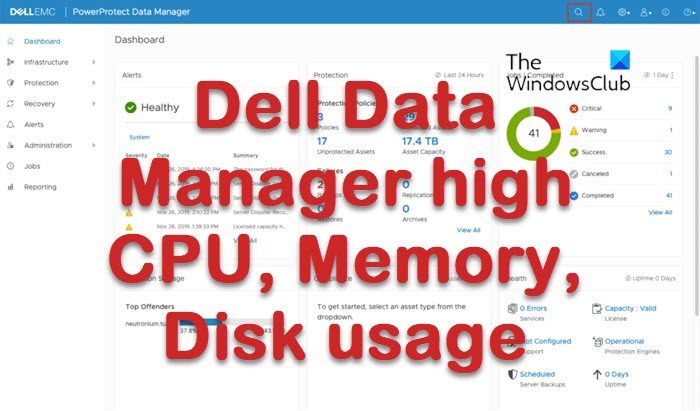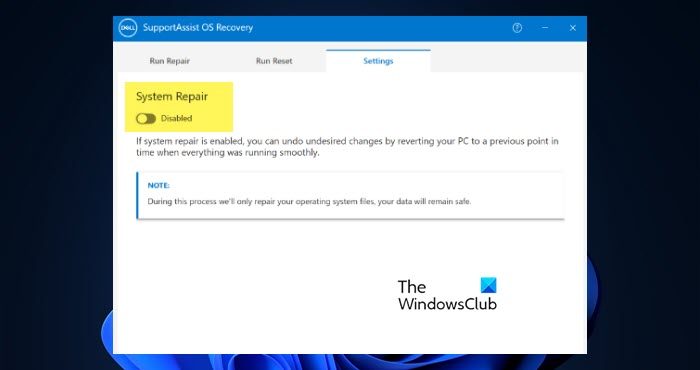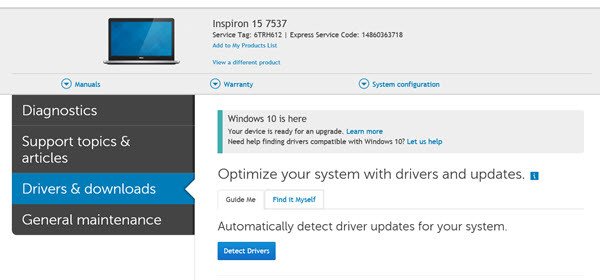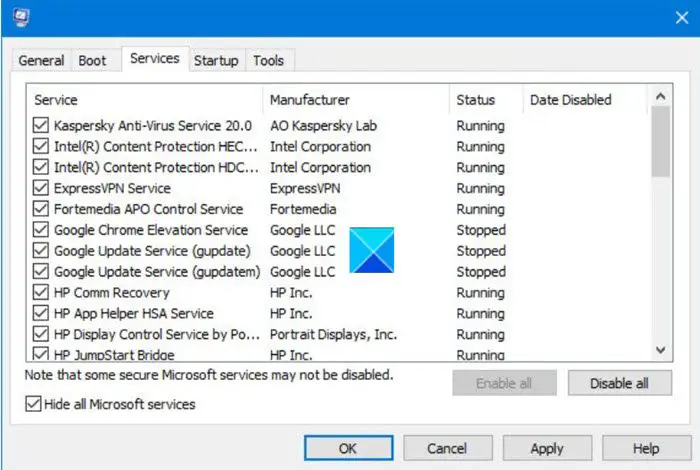Some users have noticed that when they start the computer and look in the Task Manager, Dell Data Manager shows high CPU, Memory, Disk, or Power usage. The issue is common and mostly caused by corrupted program files, software conflicts, or malware.

What is Dell Data Manager?
Dell Data Manager is a process of Dell Support Assist that looks after your data. It ensures regular backup of data to stay away from inconsistency in data. You can not access Dell Data Manager in the Control Panel or Settings but can be seen in the Task Manager.
Fix Dell Data Manager high CPU, Memory, Disk, or Power usage
Misconfiguration in the Dell Support Assist Manager can also cause this issue. If Dell Data Manager shows high CPU, Memory, Disk, or Power usage in the Task Manager of your Windows computer, follow these suggestions to resolve the issue.
- Disable the System Repair option in the Dell Support Assist
- Update all drivers
- Troubleshoot in Clean Boot State
- Scan your computer for Malware
- Uninstall Dell Data Manager
Let’s get started
1] Disable the System Repair option in the Dell Support Assist

System Repair is a feature in the Dell Support Assist app that does what its name suggests. However, for the time being, you should disable System Repair from Dell Support Assist’s settings as that increases the CPU surge. To do the same, follow the steps below.
- Open Control Panel from the Start Menu.
- Go to System and Security.
- Open SupportAssist OS Recovery.
- Go to the Settings tab and then disable System Repair.
After disabling the feature, reboot your computer and then check if the issue is resolved.
2] Update all drivers
In case drivers on your computer are not updated, it is very likely that some of the applications will face compatibility issues and hence, cause all sorts of problems. In that case, we need to update all drivers present on your computer. The best way to do this, in this case, would be via Windows Updates > Optional Driver Updates. See if any are being offered for your device and install them

Dell Update utility can also help you download or update Dell Drivers. Dell automates the whole process. It will detect the model and make of your device and components and see which drivers are required for it.
3] Troubleshoot in Clean Boot State

Dell Data Manager resource utilization is caused by third-party application processes related to Dell. So this problem can be solved by stopping these applications. To do this we have to start the computer in a clean boot in which the computer will start with a minimal set of drivers and startup programs. Follow the solutions mentioned below to do the same.
- Press the Windows key and type ‘system configuration’ and hit Enter.
- Under System Configuration, click on the Services tab.
- Check the box of Hide all Microsoft Services.
- Here, click on the Disable all button and then click on Apply > OK.
- Now, go to the Startup tab and hit the Open Task Manager.
- Search Dell-related services and disable them.
- Finally, close Task Manager and restart the computer.
Once your computer restarts, it will start without many unnecessary services. You then have to manually enable services to determine which app is causing the issue. Once you stumble upon the culprit, remove it from your system or keep its service disabled.
4] Scan your Computer for Viruses and Malware
Make sure that the issue is a result of a virus or malware that’s infected your computer. In that case, you need to scan for the malicious files and then remove them from your computer. To do the same, you can make use of any third-party antivirus that you have or use Windows Defender Antivirus.
Hopefully, you will be able to resolve the issue using the solutions mentioned in this article.
How do I disable Dell Data Manager?
Dell Data Manager is a part of Dell Support Assist, in that case, you need to disable the Assist app. One can disable the app from the System Configuration app, go to Services and then disable all related services.
Why is my CPU always at 100%?
If your CPU is always at 100%, then it is very likely that some heavy applications are configured to launch at startup and then continue chugging your resources. Not just that, if your system files are corrupted, some systems will keep hogging the CPU, GPU, memory, or some other component of your computer.